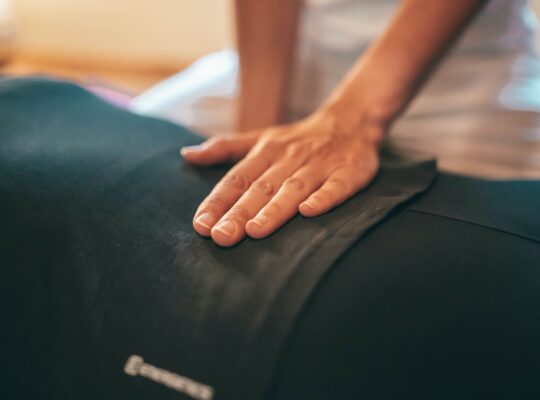The Benefits of “Pre-habbing” Your Pelvic Floor Muscles During Pregnancy
Throughout each trimester of pregnancy, just as your body will undergo physical changes and increased strain in certain areas, such as the low back, so will your pelvic floor muscles. As you progress through pregnancy, the growing fetus will start putting more pressure onto your pelvic floor muscles, especially in the third trimester. With increased downward weight onto your bladder, you find yourself needing to use the bathroom more frequently or in some cases accidentally leak urine. Some women may also experience occasional perineal pain, which can be described as being sharp or a general “heaviness” in the vagina.
It’s never too soon to start working on your pelvic floor muscles. The sooner you start strengthening your pelvic floor muscles in pregnancy, the better. Your deep pelvic floor muscles are laid out like a hammock in the pelvis and their main function is to support your uterus, bladder, and rectum. Pregnancy will load these muscles, stretching them out and weakening the tissues. Studies have shown that pelvic floor muscle training significantly improves pelvic floor muscle strength, leading to better outcomes after delivery and decreased complications during labor. Women who have had a vaginal delivery in the past are more likely to develop urinary incontinence or a prolapse in subsequent pregnancies. Therefore, it is advantageous to start a pelvic floor strengthening program now.
If you are having a healthy pregnancy, without any restrictions by your OBGYN, then you can incorporate a mix of low/ high impact activities with the pelvic floor strengthening. If you were an avid runner, crossfitter, or weightlifter before pregnancy and your goal is to return to the gym or run postpartum, it is recommended that you build up good strength and coordination in your pelvic floor muscles to prevent a prolapse or other injuries. Start slowly and then gradually ramp up distance, time, and weight. And of course, using good form, breathing, avoiding overexertion, and modifying resistance or type of exercise when appropriate throughout the trimesters are key.
How does it help in the perinatal period? In a good pelvic floor exercise program, you will learn how to properly contract and relax the pelvic floor muscles. It is also important to coordinate your breathing with these exercises – “breath holding” is actually more harmful to the pelvic floor due to increased intra-abdominal pressure. This will help during labor and delivery, especially during the pushing phase. Postpartum, you will have an easier time resuming these exercises again, with an increased awareness of what the muscle contractions feel like and slowly increasing the repetitions and contraction holds over time.
Reach me if I can answer any questions on physical therapy, serving you locally in New York City or anywhere online virtually through “telehealth“.
Sign up for Pelvic Health and Wellness Tips






